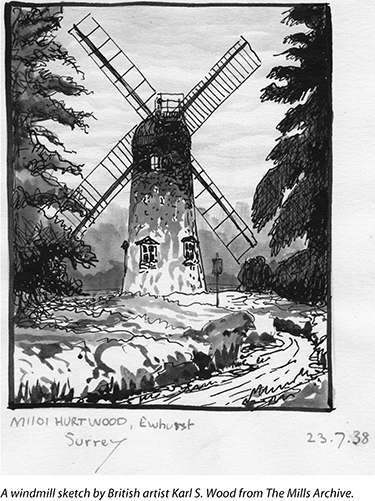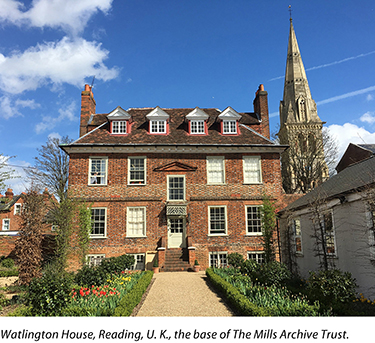 Q: What is the background of The Mills Archive Trust? How does your mission contribute to our understanding of cereal processing globally?
Q: What is the background of The Mills Archive Trust? How does your mission contribute to our understanding of cereal processing globally?
A: The Mills Archive Trust is an independent U.K.-based charity that currently has 5 professional staff members reinforced by some 20 or so volunteers. We are accredited by the U.K. National Archives as the specialist repository for preserving and protecting records of milling heritage and making them freely available to the public. This mission is supported by individual donations and project-related grants from industry and institutions.
We are recognized as the center of excellence for learning, understanding, recording, and researching the history of mills and milling. Our focus is on the English-speaking world, but with a global reach. Each year some 200,000 users from 150 countries (18% from the United States) access about 1 million pages on our website at https://millsarchive.org.
Q: What is the focus of your work, and how does it improve our understanding of cereal processing, its challenges, and its opportunities?
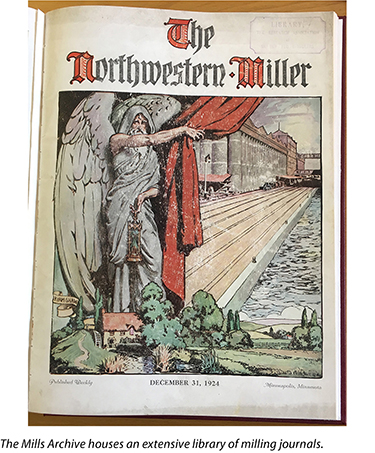 A: We trace the history of milling of cereals from the very early use of quern stones in 6,000 B.C. to the contemporary use of computer-driven systems. We develop and broadcast the narratives of the pioneers of modern milling, their setbacks and triumphs, and how they fostered progressive innovation and improvements in cereal processing around the world. We have provided technical material to mills in the United States and are particularly proud of our almost complete 100 year run of the Weekly Northwestern Miller, which was first published in Minneapolis, MN, in 1873.
A: We trace the history of milling of cereals from the very early use of quern stones in 6,000 B.C. to the contemporary use of computer-driven systems. We develop and broadcast the narratives of the pioneers of modern milling, their setbacks and triumphs, and how they fostered progressive innovation and improvements in cereal processing around the world. We have provided technical material to mills in the United States and are particularly proud of our almost complete 100 year run of the Weekly Northwestern Miller, which was first published in Minneapolis, MN, in 1873.
Our educational programs are aimed not only at those who are ignorant and misinformed, but also at those who wish to delve deeper into the story of the central role of milling in the development of civilization. We cover the primitive use of muscle power in small communities, the advent of water power during Roman times, and the move to wind power and eventually steam and more modern power sources. We show how the small rural mill was eventually replaced by larger urban mills with better transportation systems and more efficient technology.
We underline the continuing emphasis not just on efficiency and technology, but also the focus of the milling industry on nutrition and healthy foods. We combine our interest in “better technology—better planet” with the need to feed the world. We believe that there is much to learn from those who have gone before and made us what we are today.
Q: What types of people do you employ? What are your core capabilities?
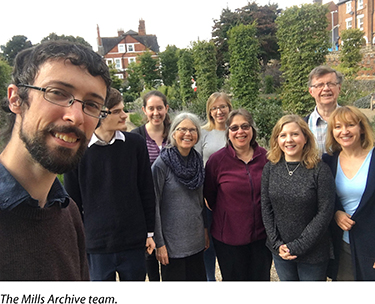 A: Our professionally qualified staff is managed by our director of programmes and development, who reports to our board of 12 trustees. Half of our trustees have a milling background, bringing with them experience related to traditional wind- and water-powered mills, as well as the modern milling industry. The other half of our trustees are people with extensive experience at senior levels in archives, libraries, information technology, and business.
A: Our professionally qualified staff is managed by our director of programmes and development, who reports to our board of 12 trustees. Half of our trustees have a milling background, bringing with them experience related to traditional wind- and water-powered mills, as well as the modern milling industry. The other half of our trustees are people with extensive experience at senior levels in archives, libraries, information technology, and business.
We have three core capabilities: our collections, interpreting milling heritage, and acting as an advocate for our milling heritage and its relevance today. The organization, cataloguing, and conservation of milling heritage collections is performed under the watchful eye of our qualified archivist. He works with his volunteer team to make available and permanently preserve our holdings of millions of documents and images. Similarly, our milling library, containing several thousand books and journals, is under the care of a qualified librarian.
With our subject expertise, reinforced by our network of advisors, we are laying the groundwork for future research and for recognizing the contributions of individuals and firms to the advancement of milling. Examples include our mammoth essay on the history of flour milling, From Quern to Computer: The History of Flour Milling (available online at https://tinyurl.com/zwfkoxq), and our Research Publication Series (available online at https://tinyurl.com/y3lv2dv4).
Our team of five graduate staff are all involved in advocating the relevance of our milling heritage by developing our information-rich website, utilizing social media, and carefully steering our e-newsletter programs to those with a shared interest. By registering at https://millsarchive.org/register-interest, those curious about milling heritage can benefit from one or more of our tailormade information programs.
Q: How did your organization start? Tell us about the founders and key milestones in your growth.
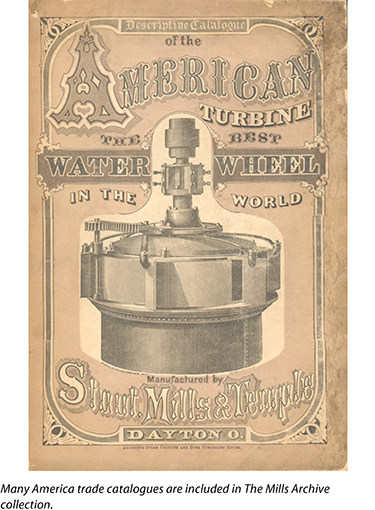 A: In 2002 a small group of British traditional millers and mill researchers (Mildred Cookson, Alan Stoyel, the late Ken Major, Michael Harverson, and Tony Yoward) identified that records of our milling heritage were progressively being lost. They elected Ron Cookson, Mildred’s husband, as chair, and together they set up The Mills Archive Trust as a registered, nonprofit charity for the public benefit to rescue these invaluable materials and give them a safe and permanent home.
A: In 2002 a small group of British traditional millers and mill researchers (Mildred Cookson, Alan Stoyel, the late Ken Major, Michael Harverson, and Tony Yoward) identified that records of our milling heritage were progressively being lost. They elected Ron Cookson, Mildred’s husband, as chair, and together they set up The Mills Archive Trust as a registered, nonprofit charity for the public benefit to rescue these invaluable materials and give them a safe and permanent home.
This approach attracted support from the mill world and funding. Ron, who had recently retired after 30 years in senior research and education roles in the pharmaceutical industry, used his business and research background to establish the facility and ensure it worked to the highest standards. Starting with four Foundation Collections, we rapidly expanded, accepting our 100th collection within 10 years. By then, we had demonstrated the need for a specialist archive and education and research facility and our ability to manage and develop it. This was recognized nationally when the chair was honored by Queen Elizabeth II in 2012 with the MBE for services to heritage.
This initial period attracted a number of talented volunteers, and within the first four years of the current decade, we were able to offer them permanent salaried positions. We had also raised our first £1 million, launched our new website and catalogue, and created the world’s first roller flour mill archive and library.
This surge in investment paid dividends when the U.K. National Archives appointed us as the first charity to achieve national recognition as an Accredited Archive Service, commenting “The Panel warmly congratulated the service on its outstanding development in recent years. They noted particularly strong activity in areas including volunteering, fundraising development, online provision and cataloguing, and considered that several of these were a model for other small services.”
A second mark of recognition was the award by the National Lottery Heritage Fund of our largest grant to date from their Resilient Heritage scheme. This has allowed us to develop our governance and management, while allowing us build up our profile with the modern milling industry to help achieve long-term sustainability.
Our major concern is to ensure sufficient finances to enable our successors to continue to have access to our millions of well-ordered and conserved milling heritage records.
Q: Tell us about your collaborations and partnerships with government, industry, and academia, and your focus on innovation.
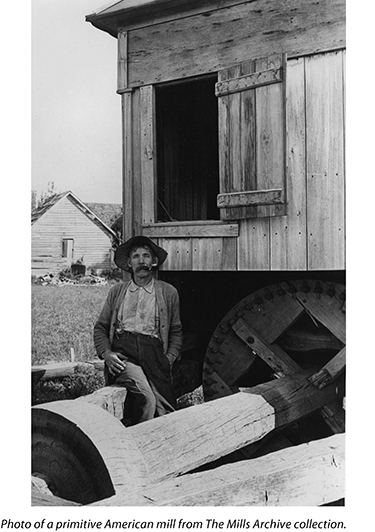 A: Collaboration with government and professional bodies has been key to our development. We were encouraged to establish our specialist milling heritage repository by the Royal Commission on Historical Manuscripts and by the Society for the Protection of Ancient Buildings. Since then, we have become well-regarded as an innovator in archives and the modern milling world, encouraged by nabim (National Association of British and Irish Millers).
A: Collaboration with government and professional bodies has been key to our development. We were encouraged to establish our specialist milling heritage repository by the Royal Commission on Historical Manuscripts and by the Society for the Protection of Ancient Buildings. Since then, we have become well-regarded as an innovator in archives and the modern milling world, encouraged by nabim (National Association of British and Irish Millers).
We were the first institution in England to adopt and develop for our purposes the international standards-based archiving catalogue AtoM. The National Archives asked us to provide a case study explaining our approach, and we have provided advice to universities and institutions interested in adopting our approach. One such institution is the National Archives of Indonesia, members of which visited us in 2017.
Our innovative approach has extended to other heritage bodies and related commercial firms. Our Heritage Partnership scheme brings in a steady source of income for which we provide training and assistance with collection care and the use of our catalogue on our partners’ websites to publicize their own materials.
For the last five years we have been producing Milling and Grain, a major international publication, with monthly authoritative articles on the theme of Milling Journals of the Past at The Mills Archive. Careful selection of topics and detailed summaries from these Victorian sources have provided many in the milling and cereals world with glimpses into our joint heritage. This, in turn, has generated a lot of support for our work, and we are now building an e-mail contact list of individuals and firms who would like to know more.
We do not see an archive as a passive storage system, but as a launch pad for reaching out to researchers, millers, and a new generation. Not surprisingly, we are now developing research support systems to build innovative links with academic bodies around the world. There is so much more for us to do, and we invite expressions of interest from potential partners in our future programs.
